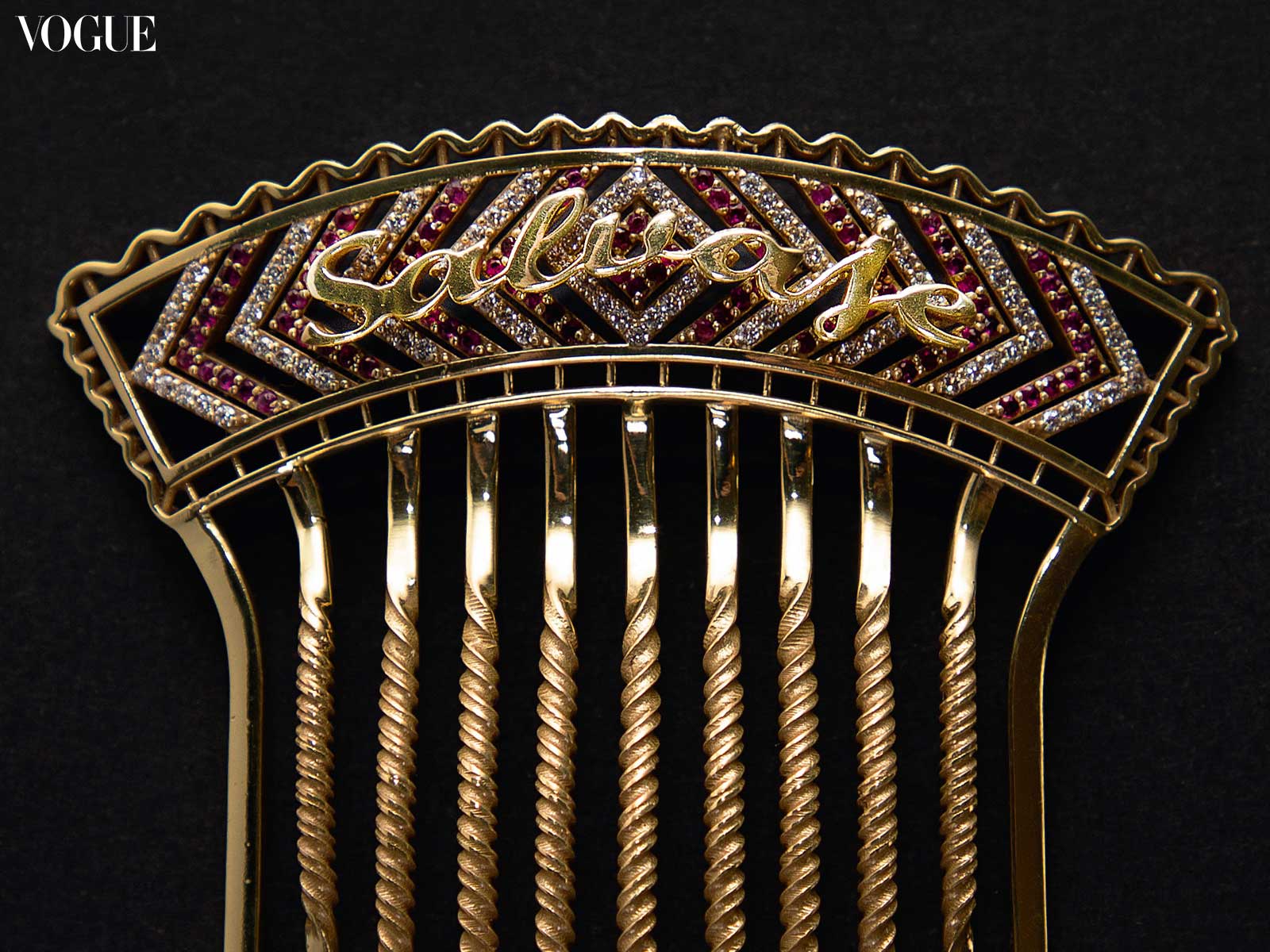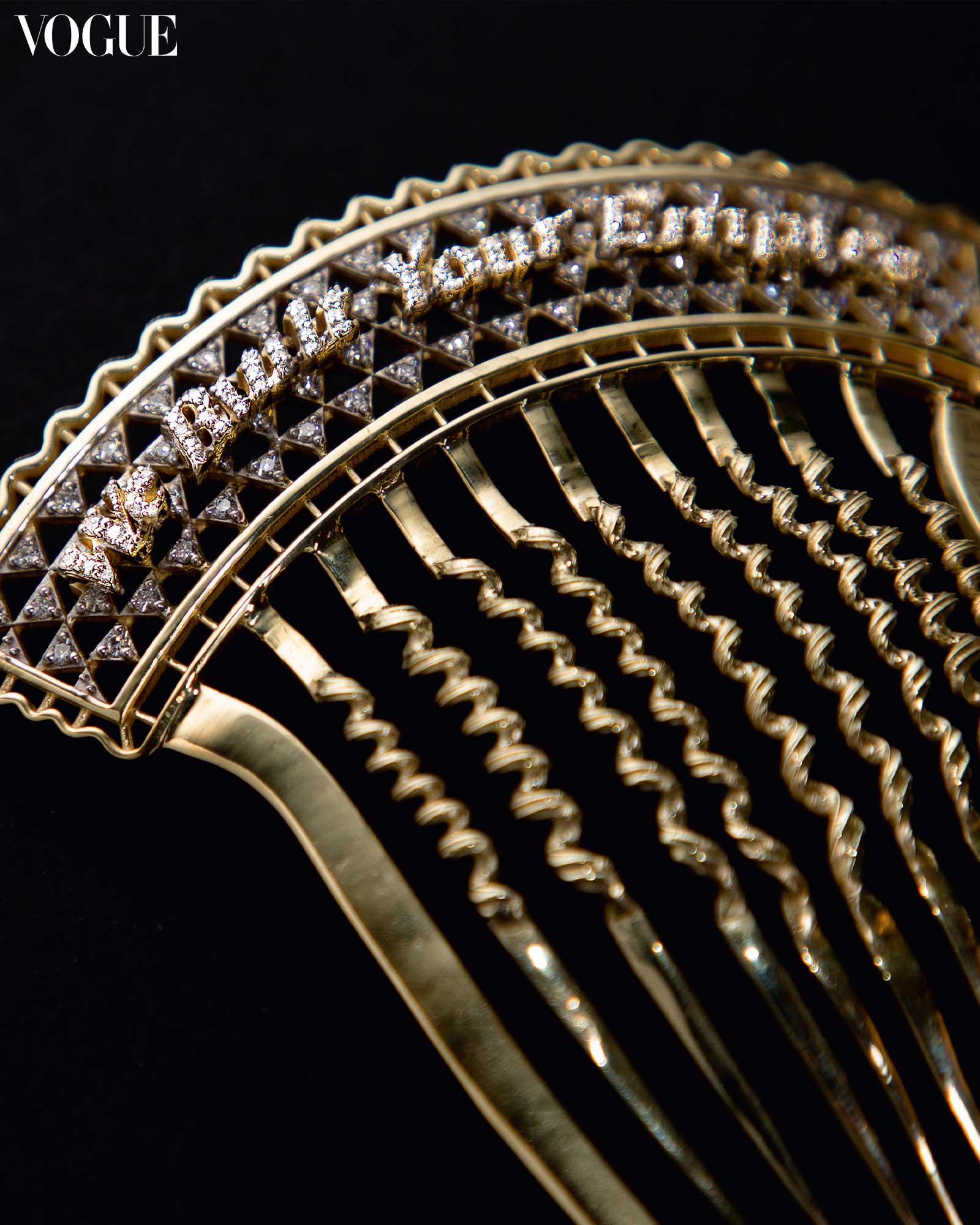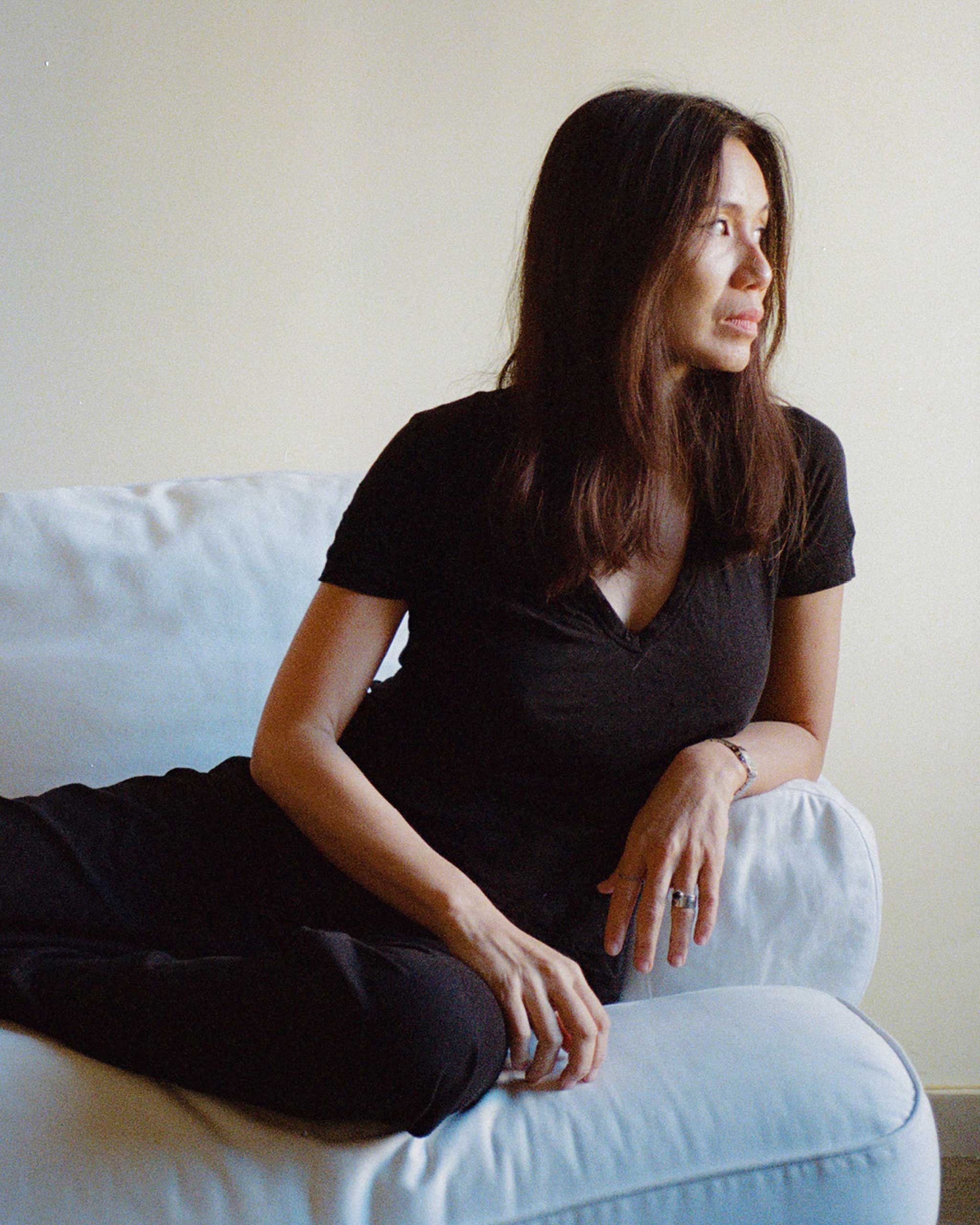Portrait by Richie Jo Espenilla
Nikki Luna tries to make sense of a Filipino woman’s place in the world through her delicate, yet savage art.
Nikki Luna appears in Vogue Philippines’ March 2024 issue, themed “Raising Hope” in the spirit of International Women’s Month. Visit vogue.ph everyday this month for daily features on inspiring women, as nominated by the people whose lives they’ve changed.
Nikki Luna was overwhelmed when she visited the well-guarded, temperature-controlled warehouse owned by the Museu Etnològic i de Cultures del Món in Barcelona. Laid out on a table before her were ancient objects from the Philippines, the artist’s home country, and she excitedly began to identify them, from beaded hair ornaments to necklaces with brass bells, and explain their significance. But when she saw the documentation that came with the pieces, her heart dropped.
“The artifacts were simply recorded and categorized, with no background. I felt their significance, functions, purpose, and stories had been lost,” she says. Wondering if they were acquired through conflict, she was informed that the collection was neither disputed nor contested. Either way, she said she had a deep desire for fellow Filipinos to see these pieces. “I did not want them to be denied the opportunity to connect with our heritage as descendants and inheritors.”
There are thousands of objects that have been taken from the Philippine archipelago over the last century which are now in the hands of international private collectors or institutions, usually stored away in a museum’s vast archive of artifacts. The Museu Etnològic i de Cultures del Món (Museum of Ethnology and World Cultures) is one such place that possesses a significant amount of material culture from the Philippines. Originally founded as a showcase of former Spanish colonies, the museum sought to augment its Philippines collection—consisting of objects from the Philippine pavilion of the 1888 Barcelona World Expo—through an acquisition campaign in the 1960s and ‘70s.

Luna was invited by Spanish curator Rosa Lleó to be part of Reenchantments, a project for artists to examine and engage with the museum’s collections and give new meaning and new life not defined by the Western gaze. The two met in 2021, at Luna’s first exhibit in Spain since moving there from Manila. Held at a different museum in Barcelona, the show intended to honor her mother and aunts, a family of eight women with whom Nikki grew up. The work was informed by their lives, several of them became migrant workers while the rest, including her own mom, remained in the Philippines as housewives and homemakers.
“I knew their lived experiences and struggles, and together we traced back their life stories,” Nikki says. “Each had their own silent battles.” These women worked nonstop as caregivers and gendered invisible laborers until they eventually became burdened with illnesses like ovarian cancer, myomas, breast cysts, and cataracts. For the show, Nikki created a pearl brooch spelling out “Guerra,” her matrilineal surname and the Spanish word meaning war.
“I hope we keep standing against being unseen, forgotten, and marginalized, and recognize that we are not the stories they tell us“
That experience of exhibiting turned out a bit like warfare, as a series of what Luna felt were unethical practices compelled her to call them out on social media. In the end, Luna regained control of the narrative and her art and showed that a Brown woman artist can and will stand up for herself in the Western art world.
For Reenchantments, Luna returns to making delicate adornments, this time in the form of a peineta or an ornamental hair comb inscribed with the word “salvaje,” the term that the Spanish colonizers used to describe the non-Christianized natives of the Philippines. Though labeled as savages, the indigenous peoples they encountered were draped in exquisitely crafted jewelry, made from gold that was found on the islands in abundance, which the conquistadores promptly plundered for their own use.
When Luna arrived in Spain in 2019, settling with her family in the Balearic Islands, she began to conduct a survey to assess how much knowledge Spanish people have about their colonial past. Over four years, she found that they echoed the same message: that the only history they know about the Philippines is in terms of the “expansion” of the Spanish empire. “The terrible brutality that we know from our own research, from books and from history—that difficult conversation is not discussed in Spain.” She believes it is still tough to talk about and acknowledge colonialism in Spain, after all, it is a country that enacted the “Pact of Forgetting,” which protected Franco-era perpetrators from accountability.

In Spain, Luna continues to hold the art therapy workshops she started over 10 years ago in the Philippines for survivors of gender-based violence and girls and women living in conflict zones. On the island of Mallorca, she leads a group of Filipina migrant workers during their days off work, making art together while listening to their stories, which are often dire but familiar tales of exploitation, oppression, and abuse.
On another peineta that Luna produced for the exhibit, the phrase “We built your empire” is encrusted with semi-precious stones. The connection between our Filipino ancestors and present-day Filipino workers is clear—it is upon their backs that these empires have flourished. Shown in conversation with the original accessories, whose function and value in the daily life of a Filipino woman have long been forgotten, the ornaments together invoke a new kind of power, folding the past into the present moment, speaking to life the stories that have been silenced.
“I hope that through stories in art, we may inform and transform the understanding of the history and beliefs of people who have been subjugated for almost 500 years,” Luna says. “I hope we keep standing against being unseen, forgotten, and marginalized, and recognize that we are not the stories they tell us.”
